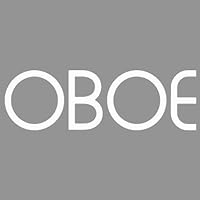When choosing a business laptop, the screen size plays a crucial role in determining the optimal balance between portability and visibility. It is important to select a screen size that enhances productivity while considering your specific professional needs. The ideal screen size for a business laptop can vary depending on factors such as the type of work you do, your preference for portability, and the display quality you require. Here is an overview of different screen sizes available for business laptops and their suitability for various use cases.
Key Takeaways:
- Common screen sizes for business laptops include 14-inch, 15.6-inch, and 13.3-inch.
- Factors to Consider When Choosing a Screen Size: Consider your specific professional needs when selecting a screen size for your business laptop.
- Advantages of Different Screen Sizes: Larger screen sizes offer better multitasking capabilities and enhanced visuals. Smaller screen sizes prioritize portability and are ideal for frequent travelers.
- Impact of Screen Size on Productivity: Choose a screen size that promotes productivity and aligns with your ergonomic preferences.
- Balancing Portability and Screen Size
Common Screen Sizes for Business Laptops
Business laptops come in various screen sizes, each with its own benefits. The most popular screen sizes for business laptops are 14-inch, 15.6-inch, and 13.3-inch. These sizes strike the perfect balance between portability, functionality and visibility, making them the top choices for professionals who require a comfortable screen size for their work laptops. These screen sizes also offer ample space for work-related tasks while ensuring portability for professionals who are always on the go.
Larger screen sizes, such as the 17.3-inch, provide a more immersive viewing experience and are suitable for tasks requiring detailed visuals or multitasking. On the other hand, smaller screen sizes, like 12-inch, prioritize portability and are ideal for professionals who are constantly on the move.
When choosing a screen size for your business laptop, consider your specific needs and preferences to make the right decision.
Factors to Consider When Choosing a Screen Size
When selecting a screen size for your business laptop, there are several factors to consider.
1. Nature of your work:
Firstly, consider the nature of your work and the tasks you will be performing on your laptop. If you work with complex data or require detailed visuals, a larger screen size may be beneficial. However, if you primarily work on the go or need a lightweight laptop for frequent travel, a smaller screen size may be more suitable.
2. Display quality and resolution:
Additionally, consider the display quality and resolution of the laptop. A higher resolution can enhance the clarity and sharpness of visuals, but it may also require a larger screen size to fully appreciate the details.
When choosing a screen size for your business laptop, it is important to prioritize display quality. A high-quality display can significantly enhance your viewing experience and improve overall productivity.
Look for laptops that offer features such as a high resolution, accurate color reproduction, and wide viewing angles. A higher resolution display, such as Full HD or 4K, ensures sharper text and images, making it easier to read and work with detailed visuals. Accurate color reproduction is especially crucial for professionals involved in graphic design or video editing, as it ensures that colors are true to life. Wide viewing angles allow for comfortable viewing, even when the screen is tilted or viewed from the sides.
When prioritizing display quality, remember that it directly impacts your ability to perform tasks efficiently and effectively. A subpar display can lead to eye strain, decreased readability, and reduced accuracy. By choosing a laptop with good display quality, you can ensure an optimal visual experience that aligns with your business needs.
3. Personal preference for screen size:
Lastly, consider your personal preference for screen size and how it aligns with your ergonomic needs. Some individuals may find larger screens more comfortable for prolonged use, while others may prefer the compactness of smaller screens.
When it comes to choosing the right screen size for your business laptop, personal preference and ergonomic considerations are key factors to keep in mind. Everyone has their own preferences when it comes to screen size, and these preferences can significantly impact your overall user experience and productivity.
Some individuals may prefer larger screens for a more immersive viewing experience. If you frequently work with visuals or require detailed analysis, a larger screen size can provide you with the space and clarity you need. The larger screen allows you to see more content at once, making it easier to work on multiple tasks simultaneously.
On the other hand, some individuals prioritize the compactness and portability of smaller screens. If you frequently travel or work in confined spaces, a smaller screen size can be more practical. Smaller screens are lighter and easier to carry, allowing you to take your work with you wherever you go.
When considering the screen size for your business laptop, it’s important to take ergonomics into account. Ensure that the screen size allows for comfortable viewing angles and does not strain your eyes or posture. A screen that is too large or too small may lead to discomfort and fatigue over extended periods of use.
By considering your personal preferences and ergonomic needs, you can choose a screen size that not only suits your work requirements but also promotes productivity and overall well-being.
Evaluate these factors to make an informed decision when choosing the right screen size for your business laptop.
Advantages of Different Screen Sizes
When it comes to selecting the screen size for your business laptop, it’s essential to consider the advantages offered by each size. Different screen sizes cater to varying needs and preferences, providing unique benefits to enhance your work experience. Let’s explore the advantages of the 14-inch, 15.6-inch, and 13.3-inch screens.
1. 14-Inch Screen:
With a 14-inch screen, you can enjoy the perfect balance between portability and visibility. It is an ideal choice for professionals who prioritize mobility without compromising on screen real estate. The 14-inch screen provides enough space to work comfortably without making the laptop too heavy to carry around. It offers a clear and readable display, making it suitable for various tasks, such as creating documents, browsing the web, or delivering presentations.
2. 15.6-Inch Screen:
A 15.6-inch screen provides a larger display area, making it a popular choice among professionals who require spacious screens for multitasking and enhanced visuals. This screen size offers ample screen real estate, allowing you to comfortably work on tasks that involve video editing, graphic design, or data analysis. The 15.6-inch screen provides a more immersive viewing experience, enabling you to see more content at once and boosting your productivity.
3. 13.3-Inch Screen:
For professionals who frequently travel and value portability, a 13.3-inch screen is an excellent option. It is highly portable and lightweight, making it easy to carry wherever you go. The 13.3-inch screen strikes a perfect balance between readability and ease of carrying. It is suitable for tasks that require both mobility and a comfortable display, such as working on documents, attending meetings, or collaborating with colleagues on the go.
In conclusion, consider your work requirements, mobility needs, and personal preferences to determine the optimal screen size that will enhance your productivity and meet your business needs.
Impact of Screen Size on Productivity
The screen size of a business laptop can have a significant impact on productivity. A larger screen size provides more screen real estate, allowing for better multitasking and the ability to view multiple applications or documents simultaneously. This can enhance efficiency and workflow for tasks that require comparing or referencing information from multiple sources.
On the other hand, a smaller screen size may require more scrolling or resizing of windows, which can result in slower navigation and decreased productivity.
When choosing a screen size for your business laptop, it’s crucial to consider your work requirements and the type of tasks you regularly perform. If you frequently work with complex data or need to reference multiple sources simultaneously, a larger screen size, like 15.6-inch or 17.3-inch, may be more suitable. However, if you primarily work on-the-go or prioritize portability, a smaller screen size, such as 13.3-inch or 14-inch, can still provide a productive working experience.
Optimizing your screen size based on your specific needs can significantly impact your productivity, allowing you to work more efficiently and effectively.
Balancing Portability and Screen Size
When it comes to selecting the screen size for your business laptop, striking the perfect balance between portability and screen real estate is crucial. Larger screens offer a comfortable viewing experience and enhance productivity, while smaller screens prioritize portability and lightweight design. To find the ideal balance, you need to consider your mobility needs and how often you’ll be carrying your laptop.
If you opt for a larger screen, such as a 15.6-inch or 17.3-inch, you’ll enjoy a more spacious display for multitasking and detailed visuals. However, keep in mind that larger screens usually come with added weight and bulkiness, which can impact portability. These laptops are suitable if you primarily use your laptop in one place or have limited travel requirements.
In contrast, smaller screens like 12-inch or 13.3-inch offer superior portability and lightweight design, making them ideal for professionals who are always on the go. However, smaller screens may limit the amount of content visible on the screen and can impact readability, especially if you work with complex data or require detailed visuals.
To determine the optimal balance between portability and screen size, evaluate your mobility needs. Consider how frequently you’ll be carrying your laptop, whether it’s for short commutes or extensive travel. If you prioritize portability and frequently work outside the office, a smaller and lighter laptop may be the ideal choice.
However, if you primarily work in a fixed location and require a larger screen for productivity, sacrificing some portability for enhanced visuals may be worth it. It ultimately depends on your specific professional needs and the trade-offs you are willing to make.
Conclusion
After considering various factors such as your work requirements, portability needs, and personal preferences, it is clear that the ideal screen size for a business laptop can vary. Common screen sizes for business laptops, ranging from 14-inch to 17.3-inch, offer different advantages and considerations.
Larger screens, such as 15.6-inch and 17.3-inch, provide ample screen real estate for multitasking and offer enhanced visuals, making them suitable for professionals who require a spacious workspace. On the other hand, smaller screens like 14-inch and 13.3-inch prioritize portability, making them ideal for individuals who are always on the go.
When choosing the right screen size for your business laptop, it is essential to consider the impact of screen size on productivity, the display quality, and the balance between portability and screen real estate. Find the perfect balance that caters to your specific professional needs and promotes optimal performance.
Different brands offer multiple screen sizes. But HP as a brand has excelled in providing good quality displays with all possible options of screen sizes to cater the needs of different users. One such series of laptops by HP is the HP ProBook series. This series comes with screen sizes ranging from 13.3 inch to 14 inch to 15.6 inch, along with amazing display quality.
Ultimately, the choice of screen size for your business laptop should be based on your individual requirements and preferences. Consider the nature of your work, the tasks you perform, and how you prioritize between portability and visibility. By selecting the right screen size, you can enhance your productivity and create a comfortable and efficient workspace.
Compare and view all the best business laptop under 2 lakh





















